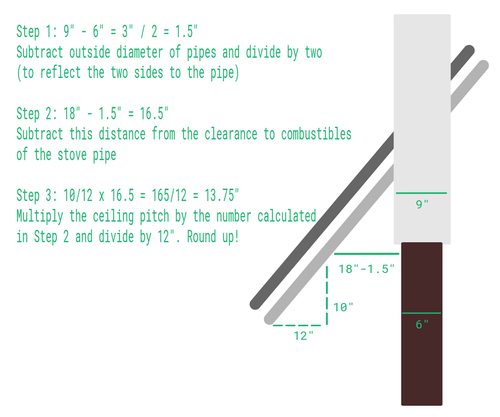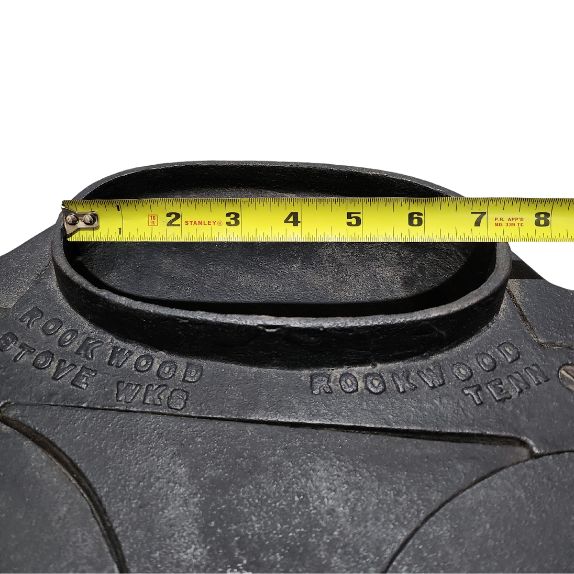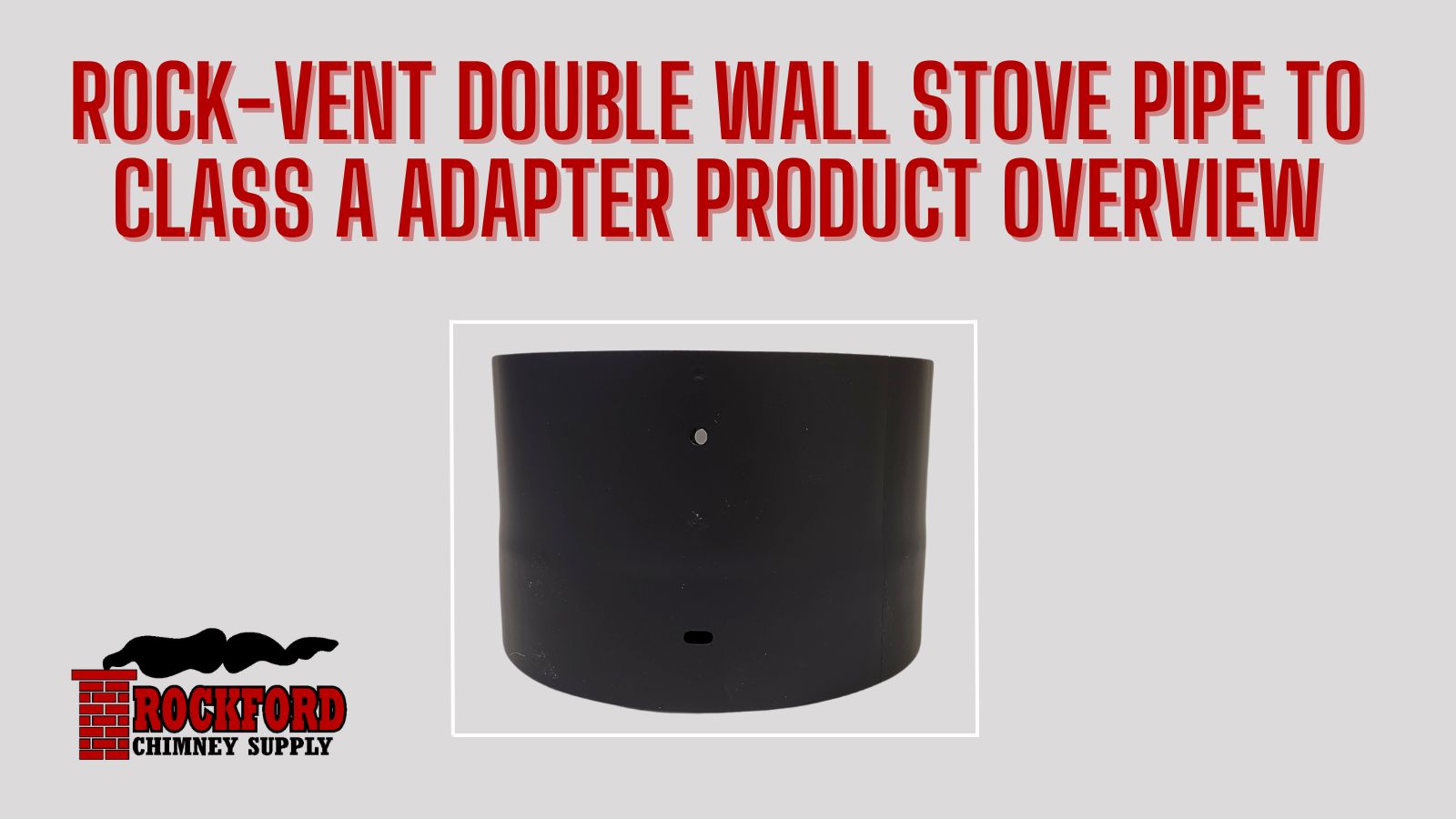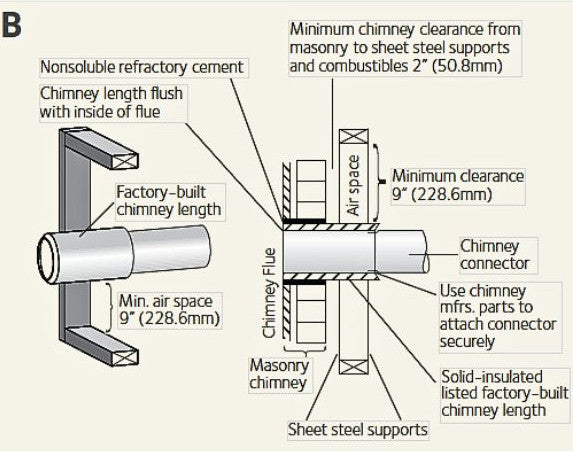Pitched Ceiling Chimney Pipe Calculation
July 19, 2023

How Much Chimney Pipe Needs to Extend Into Room?
Installing a Class A chimney pipe through a cathedral ceiling can be one of the easier types of Class A chimney installations. Since there is no attic space to pass through, lining up the hole you need to cut to pass through the roof and ceiling is very simple. Once the holes are cut, you can install the cathedral ceiling support box to carry the weight of the Class A chimney pipe.
One thing that often gets overlooked is how far the ceiling box must extend below the cathedral ceiling to ensure proper clearance for your black stove pipe. This guide will provide you with the necessary measurements to plan for a safe Class A chimney system installation.
Required Measurements
First, we must determine if we are going to connect the Class A chimney pipe to a single or double wall stove pipe. A single wall stove pipe must maintain an 18" clearance from combustible material. While a double wall stove pipe must maintain a 6" clearance from combustible material (dependent on the pipe manufacturer). Connecting single wall stove pipe would require the ceiling box to extend lower in the room as opposed to double wall stove pipe.
Next, we need to determine the pitch of the ceiling. To measure the pitch of the ceiling, you will measure from the low side of your ceiling straight out horizontally to 12" away from the ceiling. From that 12" mark, you will then measure up to the high side of the ceiling and let's say that measures 10". That will give you the rise over run or 10/12 ceiling pitch.
In either case, please take note of the manufacturer's installation instructions. If the manufacturer instructions specify the pipe needs to protrude into the room at least 6", then the manufacturer specification overrides this calculation.

Calculation for Single Wall Stove Pipe
This example will be based on a 6" Class A chimney installation with an outside diameter of 9".
Since the outside diameter of the 6" Class A chimney pipe is 9" in this example, and if we are using a single wall stove pipe, that would make the chimney pipe 3" larger than the single wall stove pipe. You divide 3" in half for the side of the pipe that would be closer to the low side of the ceiling, which would be 1.5".
Since a single wall stove pipe requires an 18" clearance from the ceiling, we then subtract 1.5" from 18" to get 16.5". Then, we multiply the roof pitch 10/12 pitch by 16.5" = 165/12 = 13.75". By rounding up, this means the bottom of the ceiling support box would need to be 14" below the low side of the cathedral ceiling.
Calculation for Double Wall Stove Pipe
 Here is the same example for double wall stove pipe and will be based on a 6" Class A chimney installation with an outside diameter of 9". The outside diameter of the 6" double wall stove pipe is 7".
Here is the same example for double wall stove pipe and will be based on a 6" Class A chimney installation with an outside diameter of 9". The outside diameter of the 6" double wall stove pipe is 7".Since the outside diameter of the 6" Class A chimney pipe is 9" in this example, and if we are using a double wall stove pipe with an outside diameter of 7", that would make the chimney pipe 2" larger than the double wall stove pipe. You divide 2" in half for the side of the pipe that would be closer to the low side of the ceiling, which would be 1".
Since a double wall stove pipe requires a 6" clearance from combustibles (dependent on manufacturer), we then subtract 1" from 6" to get 5". Then, we multiply the roof pitch 10/12 pitch by 5" = 50/12 = 4.2". By rounding up, this means the bottom of the ceiling support box would need to be 5" below the low side of the cathedral ceiling.
Please keep in mind, some manufacturers specify that the pipe needs to protrude into the room a specific amount. If the manufacturer instructions specify the pipe needs to protrude into the room at least 6", then the manufacturer specification overrides this calculation.
DIY Center
(AKA ‘The Rockford Files’)
From video tutorials to product walkthroughs, we have a variety of DIY resources just for you! Click the button below to view our entire library.








